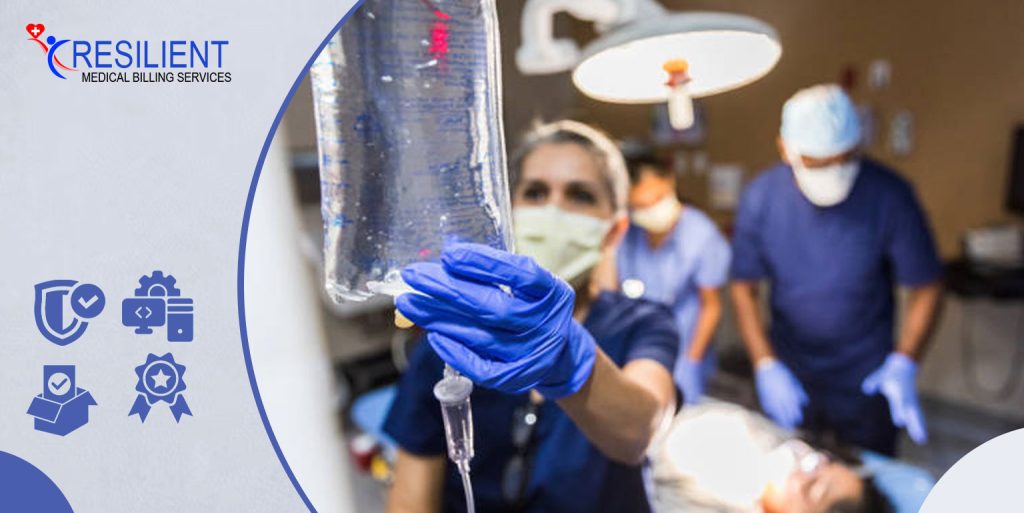Today’s hectic healthcare system makes treatment for non-life-threatening illnesses essential as soon as possible. Every year, 89 million people go to urgent care centers in the U.S. These urgent care coding centers are like bridges between regular doctor visits and emergency rooms. These places handle a lot of minor illnesses and injuries, and correct medical coding is essential to their work.
Correct urgent care coding helps healthcare workers get paid quickly and follow the rules, which is very important since mistakes in medical billing can cost the U.S. $125 billion every year. Keeping accurate information on patients also makes healthcare more efficient.
This blog will discuss the unique parts of urgent care coding and how important they are to urgent care units’ financial and operational success.
Understanding Urgent Care Coding
Urgent care coding is turning the services that urgent care centers offer into standard medical numbers that can be used for billing and getting paid back. These codes describe patients’ evaluation and treatment during urgent care visits.
They are usually based on the Current Procedural Terminology (CPT) and the International Classification of Diseases (ICD-10). It is essential for urgent care centers to use correct coding so that they get paid for the services they provide and stay in line with healthcare rules.
Urgent care coding centers deal with a wide range of cases daily, making coding more difficult than in specialized medical offices that only provide one type of care. When coding for urgent care, treatments that need to be done quickly, like diagnostic tests or minor surgeries, must be recorded correctly so that the right amount of money is billed.
The Role of Coding in Urgent Care Billing and Documentation
Coding is used for urgent care bills and documentation. When it comes to billing, it makes sure that urgent care centers get paid correctly. Claims denials and income losses go down when the codes are correct. Coding records the patient’s evaluation and treatment, ensuring they get the same care over time and follow all the rules.
Coding mistakes can lead to insufficient pay, legal problems, and audits. Urgent care coding is very complicated, so trained coders are very important to the funds of urgent care centers.
What are Urgent Care CPT Codes, and How Do They Work?
CPT codes help healthcare workers describe their services and how they work. For updated urgent care billing purposes, healthcare workers need them to get paid. These codes are required to keep medical records, file insurance claims, and do other paperwork.
Standard CPT Codes Used in Urgent Care Settings
Urgent care clinics commonly handle minor injuries, illnesses, and routine procedures, all coded using specific CPT codes.
Here are some frequently used codes in urgent care settings:
99201-99205: New patient office visits, increasing complexity from essential consultation to more detailed evaluation and management.
99211-99215: Established patient office visits, similar to new patient visits but for returning patients.
12001-12007: Simple wound repair, including stitches for minor lacerations.
93000: Electrocardiogram (ECG) measures the heart’s electrical activity.
71045: Chest X-ray, commonly used for diagnosing respiratory issues.
87880: Rapid strep test, often used for diagnosing strep throat in urgent care settings.
Use the proper urgent care CPT code to keep your claims from being denied and ensure you get paid correctly. Urgent care centers must use CPT numbers to discuss complicated situations like broken bones, diagnostic tests, and wound care.
Services in Urgent Care That Require Specific Billing Codes
In addition to the widely used CPT codes for procedures and diagnostic tests, urgent care billing codes apply to common scenarios in urgent care settings.

Here are a Few Key Areas That Tequire Specific Billing Codes:
- Diagnostic Services: Plain radiography, laboratory studies such as complete blood count, or rapid diagnostic tests for illnesses such as flu or strep throat have their unique CPT codes.
- Treatment Procedures: Small services, including stitching, casting, and injection, require separate codes to describe the degree of specialization offered.
- Follow-up Care: Follow-up codes for patients needing more frequent or specialized assessment or needing extra care after the first visit will be appropriate.
Best Practices for Urgent Care Coding and Billing
- Proper documentation of all services provided is crucial for selecting the correct CPT codes and avoiding claim denials.
- Regularly review and update coding practices to comply with the latest CPT, ICD-10, and HCPCS changes.
- Select the most specific codes to describe the services performed for accurate billing and reimbursement.
- Ensure the CPT codes correspond to the documented diagnosis for seamless claims processing.
- Confirm patient insurance details and pre-authorize specific procedures to minimize rejected claims.
- Bill the appropriate level of service without exaggerating or minimizing to avoid audits and penalties.
- Track reasons for denied claims, analyze trends and implement solutions to prevent future rejections.










